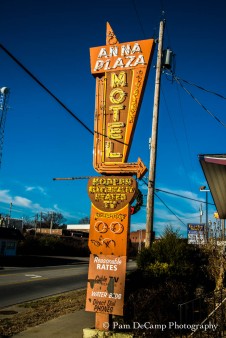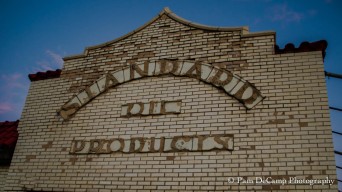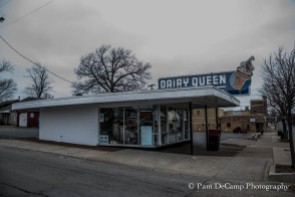Lightroom Presets


Direct Positive Preset in Lightroom
Lightroom presets are interesting. Most of the time I prefer to edit my own images. If I do decide to choose a preset, I end up making additional adjustments, so I figure I should start from scratch anyway.
I saw the frosty fog rising off of the river on Sunday morning and noticed how the trees became frost covered. I know the time frame to capture this is short and it was already 10:00 a.m. I knew I had to get moving!
I used a 0.6 ND filter, because the sun was so bright and it really separated the blue sky while maintaining the white snow. I photographed these images with my Tamron 24 – 75mm f/2.8 on my Nikon D800E at ISO 50. Shutter speeds and aperture varied depending on the light. Most of the time it was at f/8 – 11 and 1/100 – 1/200.
In post I decided to try the IR preset. Some of the images were very impressive using this preset. I do like a little more contrast, so I adjusted the blacks and contrast slightly to give me the look I wanted.
I hovered over some of the other presets and the Direct Positive really made the images pop with color! The contrast between the blues and whites was beautiful! Direct positive is a process dating back to the 1800’s. Typically, the image was captured directly onto the paper and it was a black and white image. In Lightroom, the direct positive setting increases the saturation, blacks, and highlights and produces a very high color image. The image can be easily converted to black and white after using the Direct Positive preset.
The images below demonstrate the use of 2 different presets in light room; Direct Positive on the left and infrared (IR) on the right.
While I do like my images to have a little more contrast (more pleasing to my eye), there is something about the subtleness of the image below that I like. Left is the original and right is IR. I did remove the boat from the image.
The vignette in the corners is from my ND filter on the camera. I do attempt to remove that with cropping or adding a reverse vignette.
I suggest you try some of the presets in Lightroom; what is nice, Lightroom gives you a preview of what it will look like. I use this as a starting point then make my own adjustments. I have also set up my own presets in the past if I’m editing a batch and making the same changes throughout.
Have fun experimenting in Lightroom!
Photographing Americana: Signs and Structures of our Past: Chapter 3


The Anna Plaza Motel sign in Anna, Illinois is very much a “blast from the past”. The actual age of the sign is unknown but based on the style and shape it is likely late 1940’s or early 1950’s.
Take note of the conveniences listed: Modern Electrically Heated (I assume that means the rooms) and TV. Then as the times changed a sign was added at the bottom to include Cable TV with remote, water beds, and direct dial phones.
Think about what we consider modern conveniences today. Free wifi probably tops the list for most people. I remember traveling with my parents, we looked for places that had a pool; a heated pool was a bonus. We stayed in Ithaca, New York one summer and it was unseasonably cold. The motel said they had a heated outdoor pool, but after an evening swim I was as blue from the cold water as the guy in Big Fat Liar after his swim in the blue dye!
Think about having “direct dial phones” when the majority of the nation has cell phones. How times change. I found an article written in 2005 by someone who also photographed this sign. They said in their article that this sign probably would be gone soon. Here it is 10 years later and it still stands.
As for staying at the Anna Plaza Motel; no thanks! I am sure in the early days it was a very fine establishment. The town of Anna has many old structures and other interesting signs. I look forward to sharing those with you in the future.
Photographing Americana: Signs and Structures of Our Past: Chapter 2


Standard Oil Service Station, Vienna, Illinois
Having grown up in a small rural community, I remember an old castle gas station in the center of town. It is long gone and I so wish I had taken a photograph of it to preserve its heritage. Vienna, Illinois has a beautiful gem that has fallen victim to vandals and decay.
The station was built in 1930 by the Standard Oil Company. It is one of several that was built across the country to fit the space available. Many of these old stations have been converted into private residences and other businesses. I spoke to a resident of Vienna and he said, “Many people have expressed interest in the building, but there it sits, decaying each day.”
My imagination wandered to the days of “full service” stations. I could visualize the service man rushing out to gas the car, clean the windscreen and “take a look under the hood!”
As you can see from the above photographs, the torch (in photographs of other stations, it was a beautiful gold and red torch) has been chiseled away. It also appears that someone has tried to removed the entire “service” emblem! The lettering on the crown has also been removed leaving behind a skeleton of the past.
Other views of the building show the decay that is occurring. It is just a matter of time this beautiful landmark will be a memory just as the castle in my hometown is a memory for me.
I could only see inside the bay area; there were broken panes of glass that I could aim my camera through. I read other articles lamenting the sadness people have for this wonderful icon on the corner of Routes 146 and 45. It is a shame that someone will not step up and take charge of the restoration. I’m sure the expense is a hinderance. The red tiled roof, the yellow brick; a wonderful contrast of color!
Take the time to notice the images around you; pause and reflect on the past.
Photographing Americana: Signs and Structures of Our Past Chapter 1

When you take the roads less traveled there are gems to be found!
While driving through Carbondale, Illinois this sign caught my attention. I stopped and took as many photographs as I could.
The sign says closed for the season, but according to research this Dairy Queen on 508 South Illinois Avenue is a busy place! The building is the original structure that was built in 1951 by Jack Clover. According to a 2014 article in the Southern Illinoisan, the stand has been owned by Mark Waicukauski for over 25 years and was owned by his father before him. In the article, Waicukauski says, “That old sign’s been there since the beginning!”
While traveling across the country, take the time to look around you! The gems you uncover may be diamonds in the rough!
Portsmouth Murals: A Different Perspective


 A few evenings ago I took a walk along the Portsmouth Murals. I just purchased a fisheye lens and thought I would experiment with the lens distortion. I like the 3D quality of the lens; it also makes for a cool “snow globe” effect. The shoe factory buildings stood out and appeared to be coming out of the wall! I stood against the mural with the motorcycle and moved the camera around to create just the right curve; the motorcycle looks like it is coming right off the wall! I had always enjoyed looking at images taken with a fisheye lens, but never really thought about purchasing one myself. I have played around with other images using the fisheye; it is definitely something to get used to and will work well on some subjects, but not necessarily on others.
A few evenings ago I took a walk along the Portsmouth Murals. I just purchased a fisheye lens and thought I would experiment with the lens distortion. I like the 3D quality of the lens; it also makes for a cool “snow globe” effect. The shoe factory buildings stood out and appeared to be coming out of the wall! I stood against the mural with the motorcycle and moved the camera around to create just the right curve; the motorcycle looks like it is coming right off the wall! I had always enjoyed looking at images taken with a fisheye lens, but never really thought about purchasing one myself. I have played around with other images using the fisheye; it is definitely something to get used to and will work well on some subjects, but not necessarily on others.
I like the look of the mural images. Cropping a fisheye image is best done unconstrained; meaning adjust the crop manually vs a fixed dimension. Thank you for looking and I look forward to sharing more creative images in the near future!























